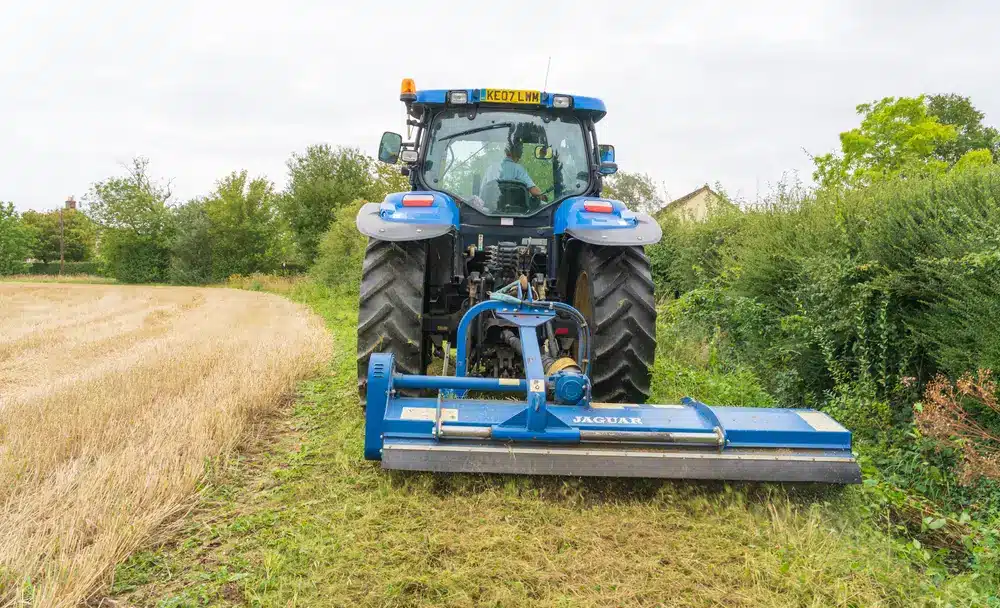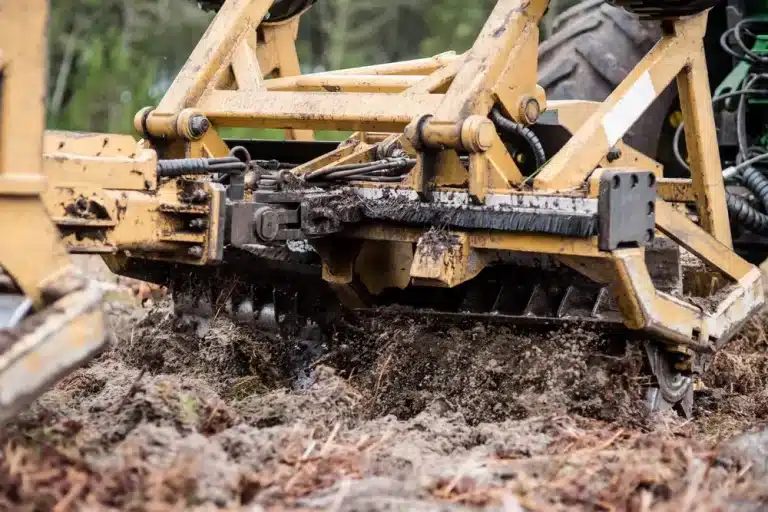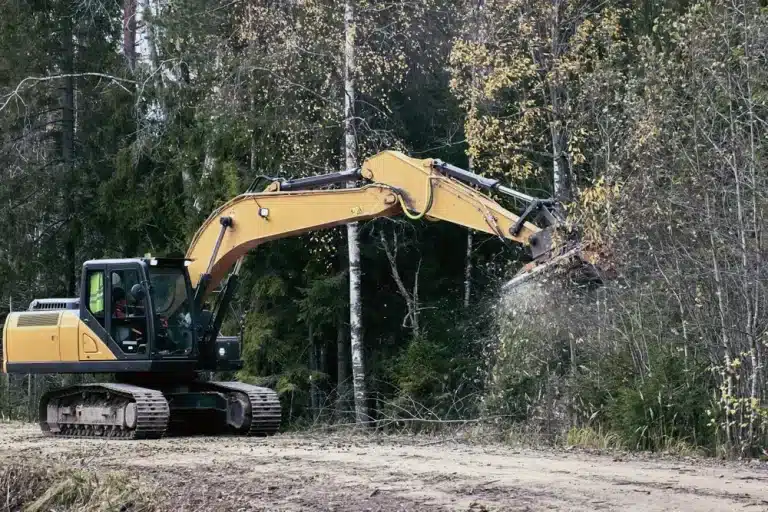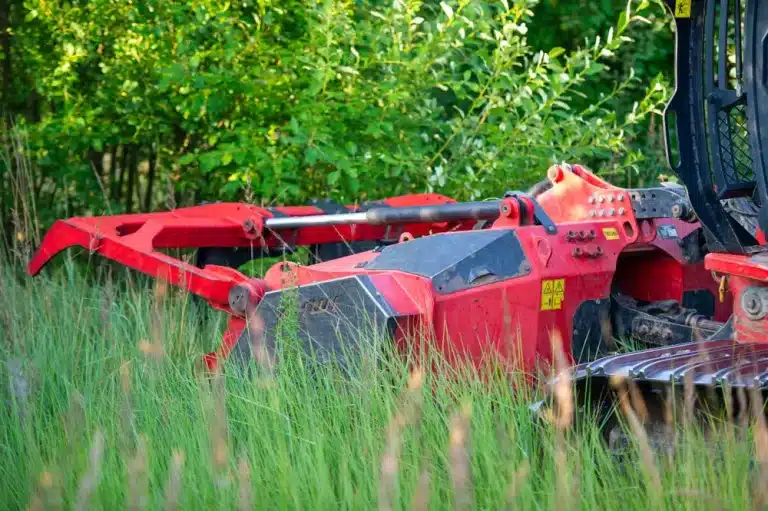In southwest France—where thick woods and farmland intermingle around Toulouse—traditional land clearing can take days and damage the soil. Forestry mulchers are changing that. These powerful machines offer farmers a faster, cleaner, and more sustainable way to clear land and improve yields across Occitanie.
How forestry mulchers support modern farming
Forestry mulchers shred brush, trees, and stumps directly into mulch on-site. This process clears land efficiently without major soil disruption—saving time and preserving field integrity.
Key benefits include:
- Soil erosion control: Reduces erosion by 30–50%
- Water retention: Improves by up to 25%, reducing irrigation needs
- Soil health: Organic matter increases by about 20%, improving crop support
- Invasive species control: Reduces regrowth by up to 80%
- Wildfire prevention: Cuts fire fuel by as much as 75%
- Faster work: Clears up to 15 acres per day—60% quicker than traditional methods
- Lower costs: Combines cutting, mulching, and spreading into one step, cutting expenses by 30–50%
The result: healthier soil, stronger crops, and more efficient farm management.
Why is forestry mulching essential for sustainable agriculture ?
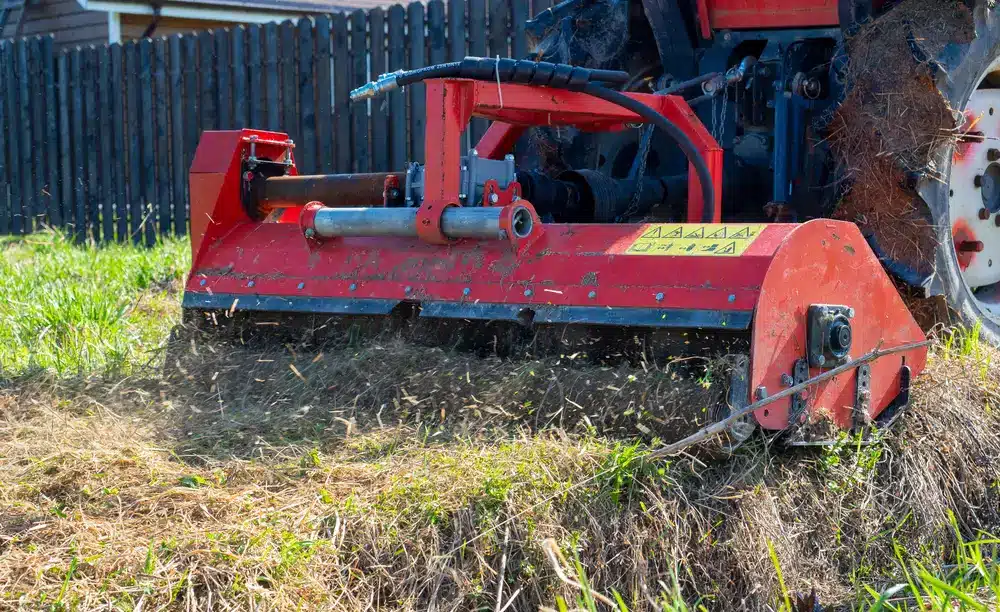
Mulching isn’t just a clearing method—it’s a tool for soil conservation and long-term productivity.
- Nutrient cycling: Decomposing mulch returns nutrients to the soil
- Topsoil protection: Shields from wind and rain erosion
- Cleaner waterways: Reduces runoff and sediment pollution
- Wildfire control: Removes dry, flammable material from fields
- Cost-efficiency: Reduces fuel, labor, and equipment needs
These improvements help farmers grow more with less disruption to the ecosystem.
Key advantages for farms and rural landowners
Here’s how mulching translates into real-world benefits:
- Improved water efficiency: Less irrigation required due to better soil moisture
- Higher yields: Healthier soil supports stronger plant growth
- Faster operations: One-pass clearing means quicker field readiness
- Wildlife preservation: Gentle clearing protects habitats and native plants
- Aesthetic appeal: Clean, mulched fields are easier to maintain and manage
- Reduced use of herbicides: Mulch naturally suppresses weeds
Choosing the right forestry mulcher for agricultural needs
Different mulcher types serve different purposes. Here’s a breakdown:
| Mulcher Type | Cutting Power | Maneuverability | Maintenance Needs |
| Drum Mulcher | High | Moderate | Low |
| Disc Mulcher | Very High | Low | Medium |
| Skid Steer Attachments | Medium | High | Low |
- Drum mulchers: Best for flat fields and large areas
- Disc mulchers: Handle thick brush and tougher trees on varied terrain
- Skid steer attachments: Ideal for smaller plots, orchard rows, or tight spaces
For rocky or wet land, drum mulchers offer better traction. Skid steers shine in maneuverability and ease of transport.
Best practices for using forestry mulchers on farmland

To get the most from mulching:
- Plan for moist weather: Reduces soil compaction and boosts mulch effectiveness
- Adjust settings: Use slower speeds and deeper cuts for dense brush; faster passes for grass and weeds
- Maintain your machine: Clean blades, check parts, and service regularly
- Inspect mulched areas: Watch for regrowth or invasive species
Mulching can reduce wildfire fuel by up to 75% and land clearing costs by 30–50%. Routine maintenance extends machine life and ensures consistent mulch coverage for healthier soil.
Common mistakes to avoid when mulching farmland
Even a powerful machine can underperform if misused. Key pitfalls include:
- Over-mulching: Too thick a mulch layer blocks air and water
- Pushing machines too hard: Reduces efficiency and causes wear
- Skipping maintenance: Leads to expensive repairs and downtime
- Using the wrong mulcher: Limits effectiveness and can harm crops
- Ignoring wildlife planning: Can damage sensitive habitats
Be sure to:
- Match the mulcher to the land and vegetation
- Stick to manufacturer speed/power guidelines
- Plan field routes to avoid disrupting animal habitats
- Conduct daily inspections and seasonal tune-ups
Measuring the impact of forestry mulchers on agricultural performance
Success isn’t just about clearing land—it’s about improving outcomes:
Soil quality
- Increased water retention
- Higher organic content
- Less erosion after storms
Cost savings
- Fewer labor hours
- Reduced fuel and maintenance costs
- Lower equipment overhead
Environmental gains
- Less runoff and cleaner water sources
- Decrease in invasive species and weeds
- Increase in native plant and animal activity
Efficiency
- Faster land readiness
- Higher crop yield potential
- Visual field improvements (via before/after mapping)
Mulching also improves safety by reducing reliance on manual labor and risky clearing methods like burning or bulldozing.
